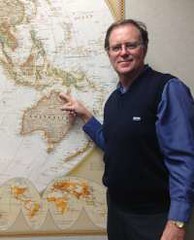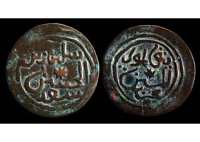
PREV ARTICLE
NEXT ARTICLE
FULL ISSUE
PREV FULL ISSUE
ANTHROPOLOGIST SEEKS ORIGIN OF REMOTE AUSTRALIAN COIN HOARD
Here's an article about an anthropologist on a quest to uncover the origins of a group of coins found in a remote part of Australia.
-Editor
Armed with a grant from the Australian Geographic Society, Ian McIntosh will lead an expedition in July to the long-abandoned Wessel Islands where the coins were found. The ancient copper coins have little monetary value, but in archaeological terms they are priceless, McIntosh said. The coins may even touch upon the arrival of Europeans in Australia, as British explorer James Cook is credited with being the first European to have encountered the country’s eastern coastline in 1770. The coins raise the possibility of shipwrecks that may have occurred along an early maritime trading route and bring to mind the ancient trading network that linked East Africa, Arabia, India and the Spice Islands over 1,000 years ago. Aboriginal folklore also speaks of a hidden cave near where the coins were found that is filled with doubloons and weaponry of an ancient era, McIntosh said. In any case, McIntosh begins his quest for answers with a nearly 70-year-old map where X marks the spot but few other clues about the coins that now reside in a box in the back of a museum in Sydney, because people don’t know what to make of them, he said.
Shortly after finding the coins, Isenberg drew an X on a map of the area that had been drawn by another soldier. McIntosh now possesses that map. Four of the coins were identified as Dutch East India Company coins, with one dating back to 1690. The other five coins, dating from the 900s to 1300s, were African coins from the once flourishing Kilwa Sultanate, now a World Heritage ruin south of Zanzibar in Tanzania. The copper coins, the first to be produced in sub-Saharan Africa, were never in use beyond the immediate locality of East Africa, and only one has ever been found elsewhere, in Oman. How and why do five Kilwa coins find their way to the Australian Outback? McIntosh said he believes an archaeological site survey, which has never been done, and an excavation will begin to answer those questions.
To read the complete article, see:
IUPUI led expedition seeks source of thousand-year-old coins in Aboriginal Australia
(newscenter.iupui.edu/5945/IUPUIled-expedition-seeks The Numismatic Bibliomania Society is a non-profit organization promoting numismatic literature. See our web site at coinbooks.org. To submit items for publication in The E-Sylum, write to the Editor at this address: whomren@gmail.com To subscribe go to: https://my.binhost.com/lists/listinfo/esylum All Rights Reserved. NBS Home Page Contact the NBS webmaster 
|

